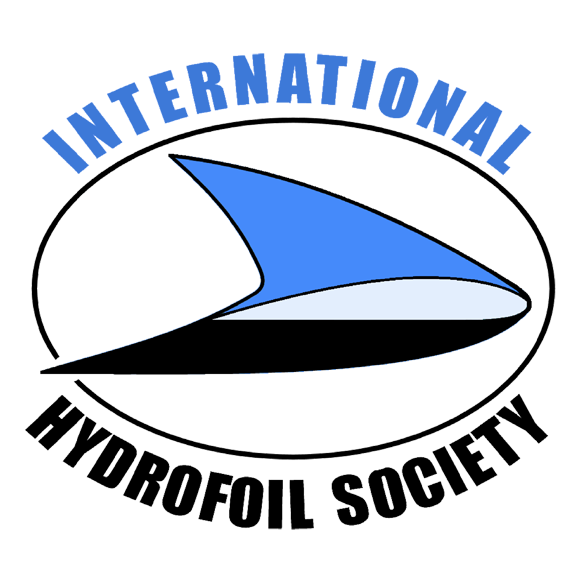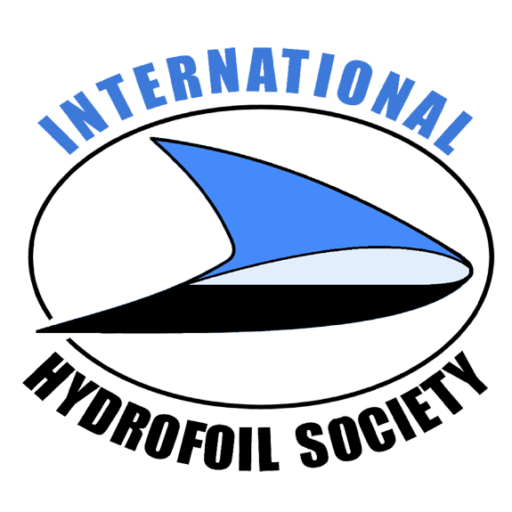First Prize 2014
Subject: Speed Sailing Design and Velocity Prediction Program
Author: Dane Hull
Australian Maritime College, UTAS. Tasmania
Faculty Adviser: Dr. J. R. Binns
Description:
In recent years the performance of high speed sailing craft has been increasing rapidly. One reason for this rapid development is the introduction of hydrofoils to high speed sailing craft, this has allowed sailing craft such as l’Hydroptere to reach speeds in excess of 60 knots, Hydroptere [2010]. The International Moth Class dinghy is perhaps the most significant example of these high performance craft. The performance of these craft is to be determined by the development and use of a Velocity Prediction Program (VPP). This investigation uses experimental and theoretical studies to estimate the gravitational, aerodynamic and hydrodynamic forces acting on the moth while sailing. Lift and drag data for the lifting foils is predicted using experimental results by Binns et al. [2008], at the Australian Maritime College, Tasmania. These forces are used in a force balance to predict the performance of the moth sailing dinghy, the program used to solve for equilibrium conditions is FutureShip Equilibrium. The results of the VPP are validated using Global Positioning System (GPS) data from a race tracking website, TracTrac [2011]. Boat speed and true wind angle (TWA) data is obtained from the race tracking website, TracTrac [2011] and wind speed data from a weather history website, Wunderground [2010].
~~~~~~~~~~~~~~~~~~~~~~~~~~~~~~~~~~~~~~~~~~~~~~
Click here to download PDF version
Honorable Mention 2014
Subject:Design and Assessment of a Super-High Speed, Surface-Piercing, Supercavitating Hydrofoil Craft
Authors: Vasileios Georgiadis, Leon Faison and Kyle Miller
Massachusetts Institute of Technology
Faculty Adviser: Prof. Stefano Brizzolara
Description:
The need to expeditiously transfer personnel from shore to oil platforms exists within the offshore oil industry. A concept design for a high-speed vehicle called Wavecutter is proposed as a solution and assessed. Wavecutter is a hybrid design that would combine the advantages of a SWATH design with those of surface-piercing (SP), super-cavitating (SC) hydrofoils. In high sea states, the vessel travels at lower speeds in displacement mode, taking advantage of the seakeeping characteristics of the SWATH design. At lower sea states, the vessel will travel in excess of 80 knots in foil borne mode, taking advantage of the high lift to drag ratio of the hydrofoils. The hydrofoil design began with preliminary weight estimations and calculations of the lift forces needed to support the vessel in foil borne mode. Sizing and foil profile considerations were examined based on the speed profile determination. A feasibility assessment was then conducted on the hydrofoils by determining the structural loading and stress response. A hybrid SP-SC hydrofoil, based on a new SC section blended with a partial NACA 4412 section was designed and chosen as the preferred type of hydrofoil for this craft. Finally, static stability and seaworthiness in head waves was evaluated at maximum speed. The vessel demonstrated positive longitudinal static stability and acceptable seakeeping behavior. Future studies should focus on CFD seakeeping analysis, global structural analysis, and determination of an exact seakeeping operational safety envelope. Overall, Wavecutter presents a viable option for super-high speed crew transport comparable to other means of transportation.
~~~~~~~~~~~~~~~~~~~~~~~~~~~~~~~~~~~~~~~~~~~~~~
Click here to download PDF version
Honorable Mention 2014
Subject: On the Design, Construction and Testing of a Fully-Submerged Canard Hydrofoil System for a Low-speed Solar Boat
Authors: Neola Putnam, Gregory Dickert, Caleb Wagner
Cedarville University, Ohio
Faculty Adviser: Dr. Timothy Dewhurst
Description:
A competition team project to design and build a fully-submerged canard hydrofoil system for a 6 m (18 ft) solar boat was completed to improve craft performance by reducing overall drag. The project focused on three main areas: developing approaches to hydrofoil design using Computational Fluid Dynamics (CFD), improving the manufacture of hydrofoils using infused molding, and achieving foil articulation and flight control with a surface follower mechanism. The CFD work focused on single-phase 2D and 3D analysis of Eppler 420 and Eppler 396 hydrofoil models at low to intermediate Reynolds number using ANSYS Fluent 14.0’s inviscid, laminar, and Spalart-Allmaras turbulent models. The half-span of a single hydrofoil was modeled using symmetry to investigate tip vortices and winglet performance. The hydrofoil manufacturing focused on developing a reliable method of manufacturing carbon fiber foils using a vacuum infusion closed-mold process. Medium-Density Fiberboard (MDF) was used for the mold material, and two types of products were tested for mold coating: polyurethane and gelcoat. The foils were composed of aluminum and foam core inserts wrapped in carbon fiber. A lightweight and adjustable mechanical feedback control system actively articulated the front hydrofoils’ angle-of-attack and consequently, set boat flying height and maintained craft stability for sustained and self-leveling flight. Independent variable height follower arms attached to water-following skis controlled the angle-of-attack of the font foils. A four-bar linkage system was synthesized to articulate the foil precisely through the full range of motion, from take-off to flying angle-of-attack. Key results of this project were the advancement of the team’s CFD hydrofoil modeling practices, the establishment of a reliable carbon fiber foil manufacturing process that yielded foils with excellent surface finish, and a sophisticated foil articulation mechanism. The fully-submerged hydrofoil system as designed and built for the solar boat succeeded as a proof-of-concept design by achieving flight.
~~~~~~~~~~~~~~~~~~~~~~~~~~~~~~~~~~~~~~~~~~~~~~
Neola Putnam recently completed her Master of Engineering degree in Mechanical Engineering at Cornell University. Starting summer 2014, she will be working as a Research and Development Engineer for Proctor and Gamble’s FemCare department. She received her bachelor’s degree in Mechanical Engineering from Cedarville University.
Gregory Dickert worked as a manufacturing engineer transitioning into the shop operations manager at JMS Composites of Springfield, OH the past year after graduating from Cedarville University with a bachelor’s degree in mechanical engineering. He recently accepted a position with Fujitec America Inc. in Mason, OH as a Mechanical Designer for elevators. He plans to pursue a MBA in engineering management in the near future.
Caleb Wagner is currently working as a crew systems engineer for the United States Air Force at Wright- Patterson AFB. Beginning fall 2014, he will be attending Purdue University, pursuing a M.S.M.E. His work on hydrofoil control at Cedarville University inspired him to focus his graduate studies on dynamics, controls, and design.

